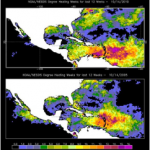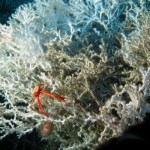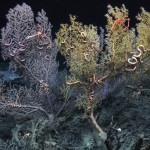An occasional series where we briefly report 3 new studies and tell you why they are cool!
A new paper by Boyce, Lewis, and Worm from Dalhousie University, provides clear evidence of decreasing phytoplankton biomass over the last century. The researchers used a blended dataset of ~450,000 measurements of chlorophyll consisting of field measurements of chlorophyll concentration in the water and water transparency taken between 1899 and 2008. Statistical analyses were conducted to ensure that the two types of measurements were comparable. The researchers found that for eight out of ten ocean regions, phytoplankton biomass decreased. Greater decreases were observed with increasing distance from land. On the continental shelf phytoplankton biomass actually increased since 1990 likely due to the intensifying of nutrient input, i.e. eutrophication, from land runoff. The researchers find the overall decreases in phytoplankton biomass to be correlated with sea-surface temperatures in the eight regions.
Why this paper is cool? A recent suite of studies based on either chlorophyll concentrations measured with satellites or field chlorophyll measurements indicate that major changes have and are occurring to ocean phytoplankton. These studies have produced mixed findings on the exact nature of this change. In part this reflects the lack of long-term time series, satellite imagery for the oceans only goes back to the 1970’s, or the often regional focus of field studies. This paper represents one of the few that is both global in scope and provides such a long-term historical view. The findings of this paper are not only consistent with these previous studies but help to reconcile observed differences in phytoplankton trends among the varying oceans.
Boyce, D., Lewis, M., & Worm, B. (2010). Global phytoplankton decline over the past century Nature, 466 (7306), 591-596 DOI: 10.1038/nature09268
In Proceedings of the National Academy of Science, Sharp et al use Thorium-230 dating of corals used in temple construction on a Polynesian island to examine the development of architectural elements. These formal temples, marae, consisted for a formal court, upright slabs representing deities, and elevated altar or ahu. Depending on the importance and wealth of the chief, marae size and complexity could vary. As shrines and temples typically reflect a rise in society complexity and formation of early states, dating the emergence and elaboration of temples provides insights into the development of culture. The authors found on the island of Mo’orea that temple architecture developed quickly over a mere 140 years and predated European arrival. Key architectural elements like coral veneers were superceded by cut and dressed coral blocks and followed by the innovation of multitier stepped ahu.
Why this paper is cool? Ceremonies at the marae required human sacrifice to the war god ‘Oro. Corals, chemistry, radioactivity, ritual killings, war gods, development of society complexity and ornamentation…this study has everything. Coincidentally these are also the same things that characterize one of Kevin Z.’s parties
Sharp, W., Kahn, J., Polito, C., & Kirch, P. (2010). Rapid evolution of ritual architecture in central Polynesia indicated by precise 230Th/U coral dating Proceedings of the National Academy of Sciences, 107 (30), 13234-13239 DOI: 10.1073/pnas.1005063107
A majority of deep-sea systems are food limited and reliant on carbon produced at the ocean’s surface sinking to the seafloor. Much attention is given to how the amount of food available dictates the number of species. Much less attention is given to how the amount of food can determine what species are in a locality. A comprehensive study on the small organisms living in muddy ooze of the deep Gulf of Mexico addresses this question. Sampling from depth of 200 to 3700 meters throughout the Gulf, Chih-Lin Wei and colleagues quantified nearly 1,000 species. The distribution of species in the Gulf is significantly correlated with export particulate organic carbon (POC) flux from the ocean’s surface. In fact, POC and depth explained over 70% of the variation in composition of ecological communities. Communities east and west of the Mississippi River, suggesting the potential importance of the submarine canyon, changes in currents, or sediment and organic input are also important in determining Gulf of Mexico biodiversity.
Why this study is cool? This is the study I wish I would have done and the paper I wish I would have written. The study represents one of the most comprehensive deep-sea surveys to date. At least 5 cores were taken at each of the 51 stations throughout the Gulf. But the paper goes beyond just describing pattern and moves toward the processes that determine deep-sea biodiversity.
Wei, C., Rowe, G., Hubbard, G., Scheltema, A., Wilson, G., Petrescu, I., Foster, J., Wicksten, M., Chen, M., Davenport, R., Soliman, Y., & Wang, Y. (2010). Bathymetric zonation of deep-sea macrofauna in relation to export of surface phytoplankton production Marine Ecology Progress Series, 399, 1-14 DOI: 10.3354/meps08388
Share the post "The Tide Pool: Loss of Phytoplankton, War Gods and Corals, and Gulf of Mexico Biodiversity"




